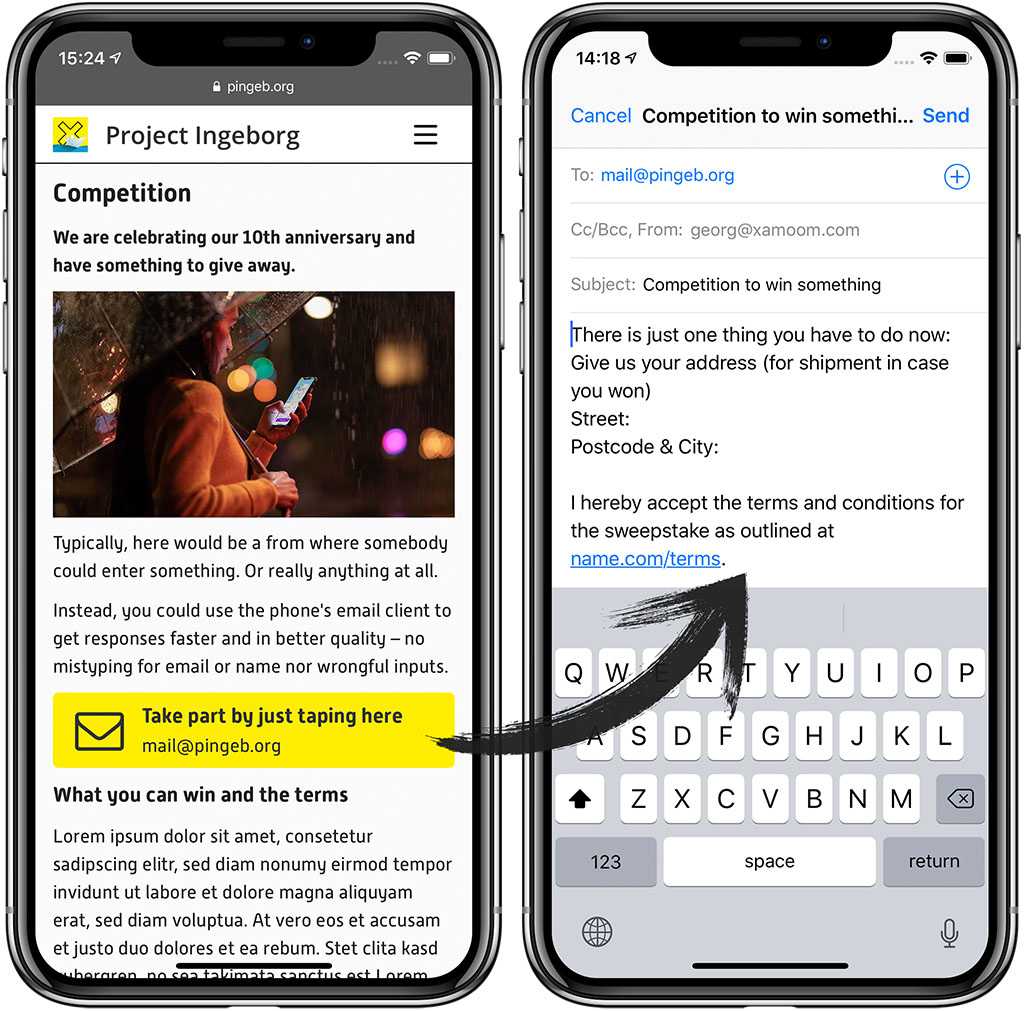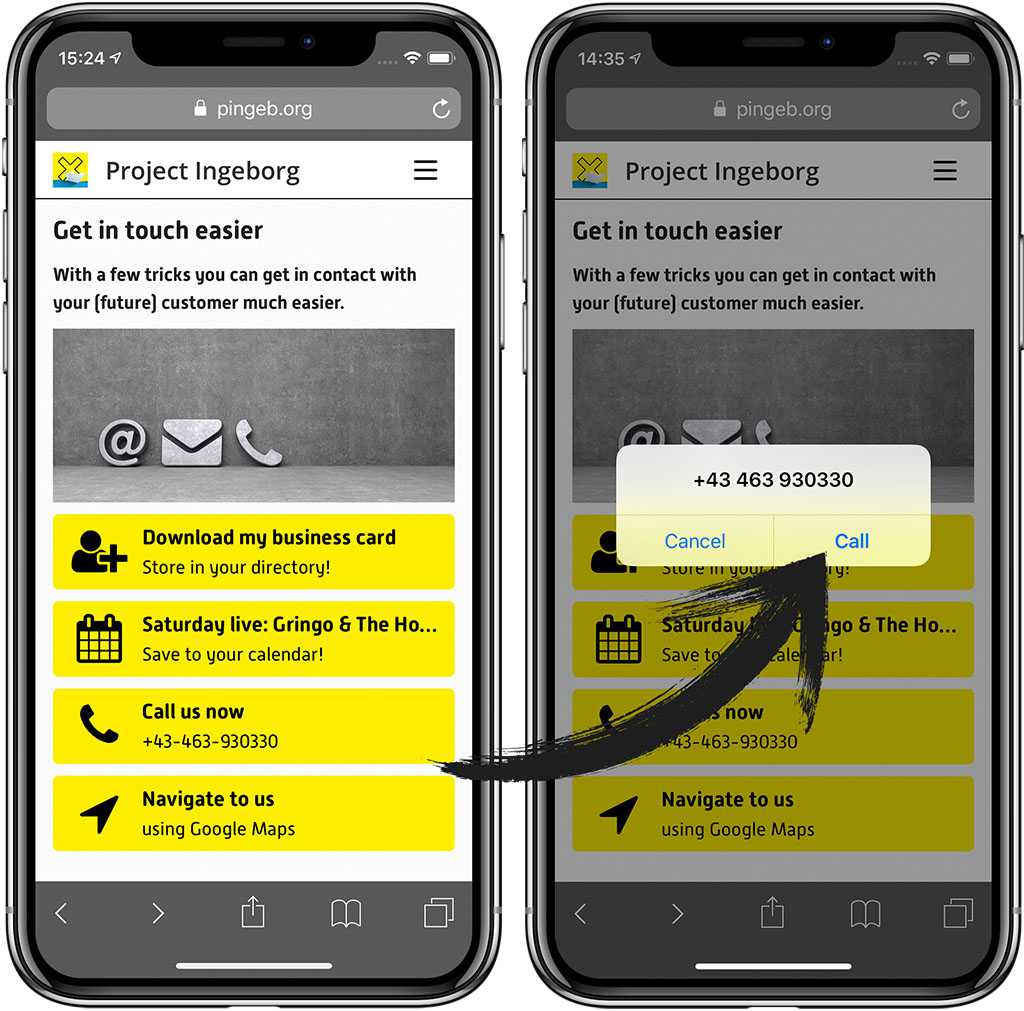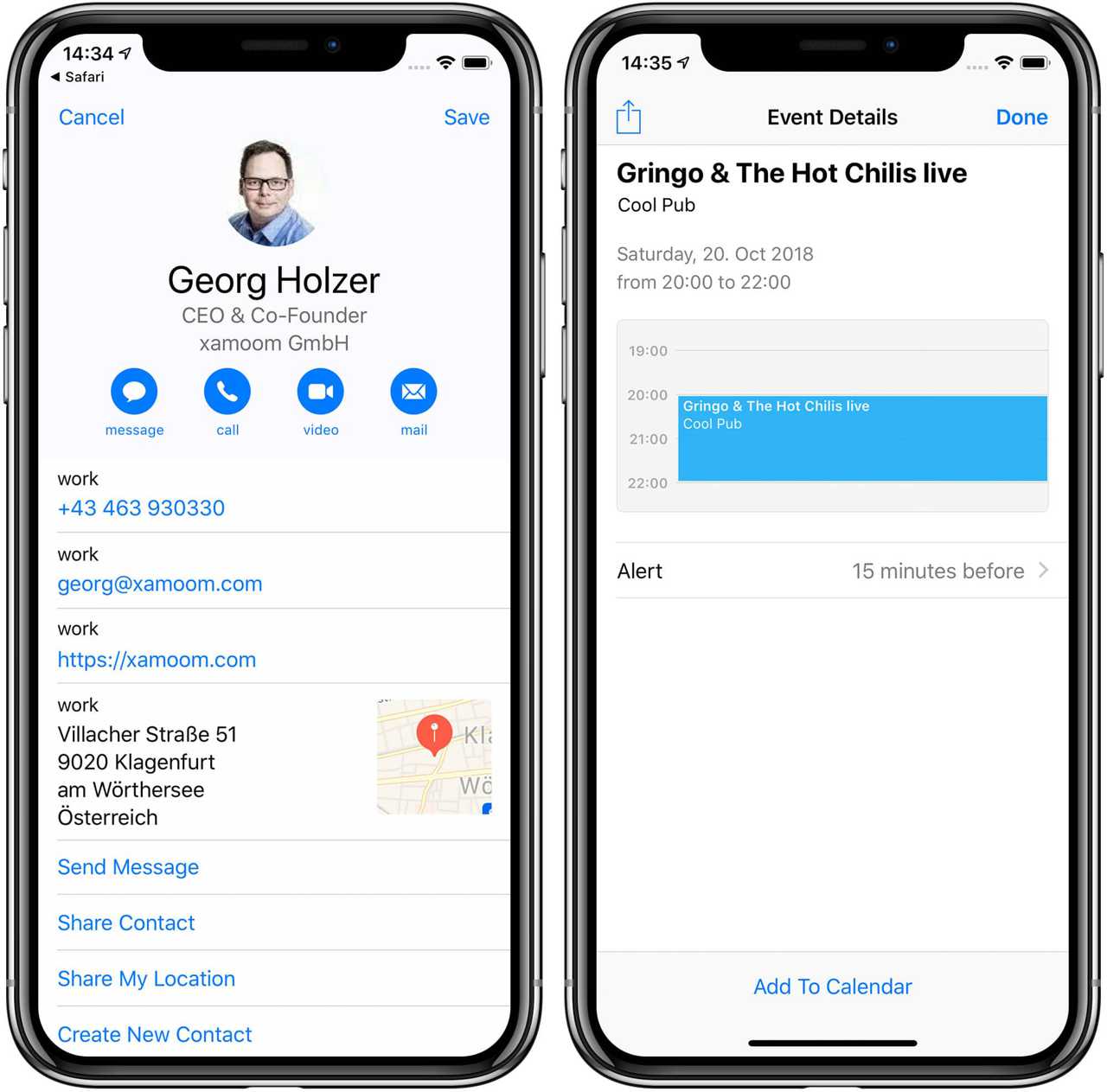It is really easy to succeed in mobile – at least for those who truly think mobile-first. What do I mean by that? I mean to think 100 percent on the user. First of all, there is the main question: What could she/he need to know in this place or this situation?
The other question can make the user's life much easier: How can the smartphone assist the user in solving her/his problem?
We have a couple of examples that address this very issue and that determine the success (or failure) of a mobile information system.
Forget forms! Now!
xamoom does not offer forms because in most cases they are pointless on the phone. In every case so far, we helped our customers to work around forms with a method that is actually much better: a simple and powerful email link!
Forms force users into pointless tasks – e.g. typing in stuff like name or email address that is already stored in the phone's email account. This eliminates not only work but reduces typos and prevents conscious wrong entries.

Clever use of the email client on a smartphone by xamoom
You can continue to ask stuff within the email but ask as little as possible. The mailto tag in HTML is more powerful than just for creating a message in an email client.
<a href="mailto:mail@domain.com?subject=Subject&body=Text">Text of the link</a>
The red parts of this HTML code can be changed to whatever you want. But be aware that you have to "code" the spaces and special characters. Since more complex mailto links are hard to write manually, there are sites like e-mailer.link that help you out.
You can save the user a lot of effort while generating cleaner data and still be able to automate email workflows with automatic responses (e.g. to reply with a voucher).
Extra tip: Make links on the phone bigger – ideally create buttons that are finger-friendly and not too hard to hit.
e-mailer.link
Trigger a call or navigate to your business
Making a call is a phone's "core competency". Yet, almost no marketer is using this "feature" of today's smartphones. With a special link, you can have the user call you with a simple tap on the screen.
The HTML for a phone link looks as follows:
<a href="tel:+1-555-555222">Call us at +1-555-555222</a>
Extra tip: As in the example above we are a big fan of transparency. It is absolutely not necessary to show the email address or the phone number in the link button. Yet, this creates trust and the user is much more likely to click on a link when she/he knows in advance what will happen. This is especially true on mobile.

Help your customers getting in touch with you easier
Navigation links are of great use too. Since every phone has got the capability to offer turn-by-turn directions, you can make use of this. Help your (future) customers to get to you with less stress and hassle. How?
Just search for your business or location on Google Maps and copy the URL. Then use this URL to link on a phone. If the user clicks on it, the app for Google Maps will automatically open. Google Maps is present on all Android phones. While Apple ships its own maps app, you can still use Google Maps links on the iPhone. If the app is not available (installed by the user) the mobile web version opens which also offers turn-by-turn navigation for free.
Store data on your customer's phone!
How hard can you make your customer's life? Very hard and this is not in your own interest. You want her/him to contact you whenever a sale could happen.
On the other side, you give away analog business cards on paper. How about having your customers store your contact data in their phone book? This way, it is always available when needed.
How? Easy!
Just offer them a .vcf file for download on the phone. Everything they need to do is to hit "Save" on their phone and all your contact information is stored on their phone.
.vcf files can be created easily via Microsoft Outlook:
- Store your contact info in an entry.
- Drag and drop it on your desktop.
- Rename and upload it to whatever server you wish.
See the result below on the left.

Save a calendar entry and contact file on your customer's phone
Have you ever wondered why you get tons of RSVPs for Facebook events and much fewer people are actually showing up to your parties or concerts?
It is far too easy to accept an event invitation and it is almost impossible to keep track of all of them. People are used to calendars and Facebook, unfortunately, does not offer the possibility to add the event to a phone's calendar. So, this is your job!
As with digital business card files, you can very easily create digital calendar entries:
- Add the event with all the information into your own calendar in Microsoft Outlook.
- Drag and drop it to the desktop.
- The result is a .ics file that you can rename and upload everywhere.
Such files are universally understood by almost all calendars, software programs, and apps – on Windows and Macs as well as on all phones.
Once the user clicks on it, it looks like on the upper right. On Android, it looks more or less the same as on the iPhone.
Extra tip: You can preset the time the calendar reminds the user of the event. Do not forget to set this option.
